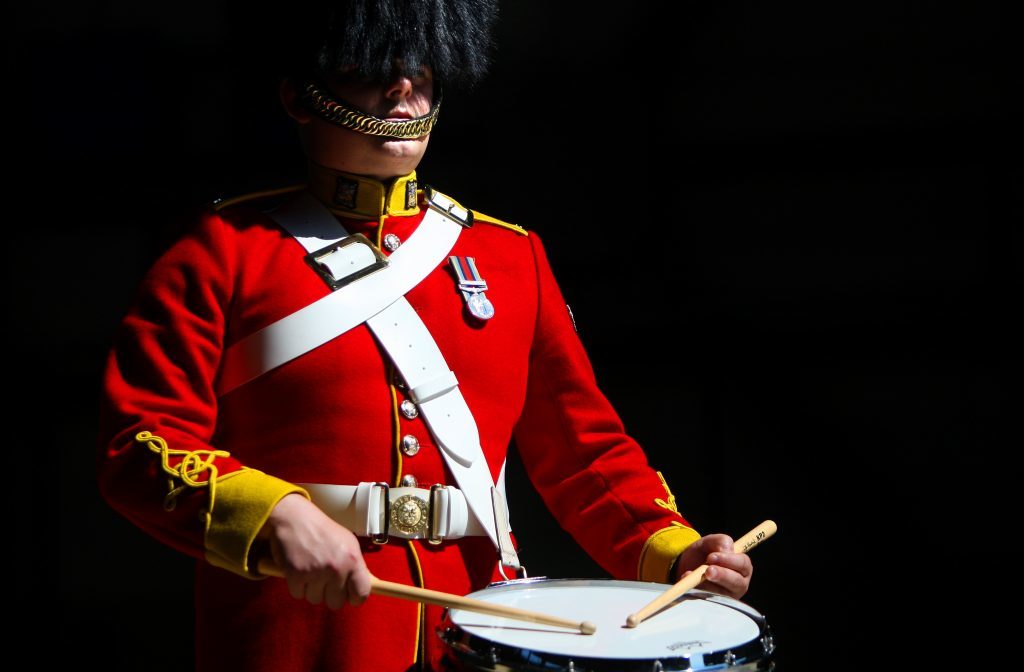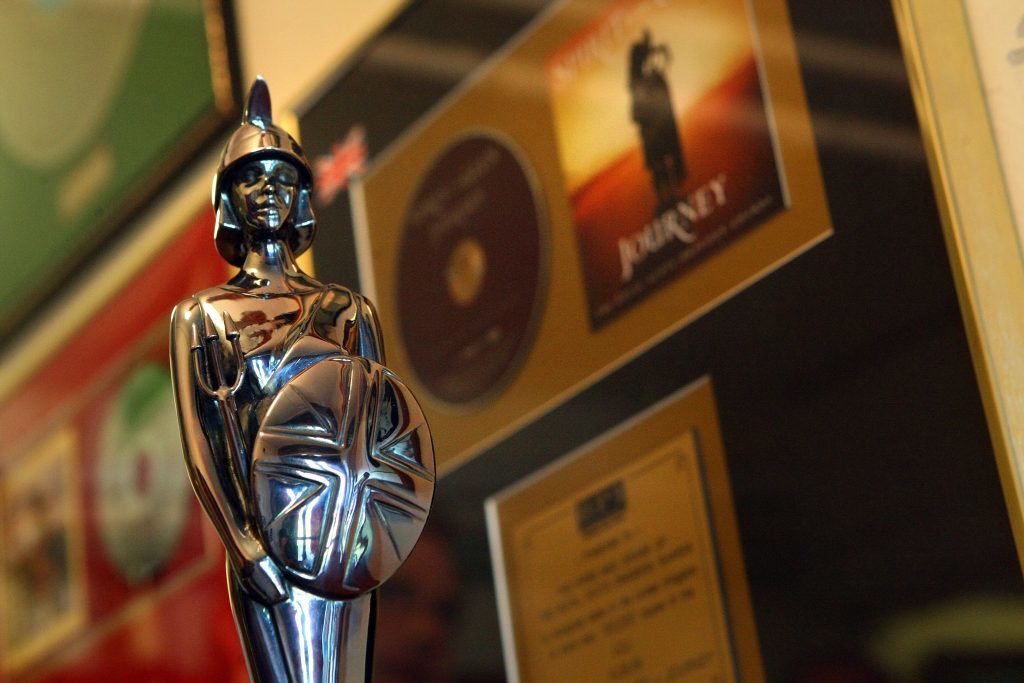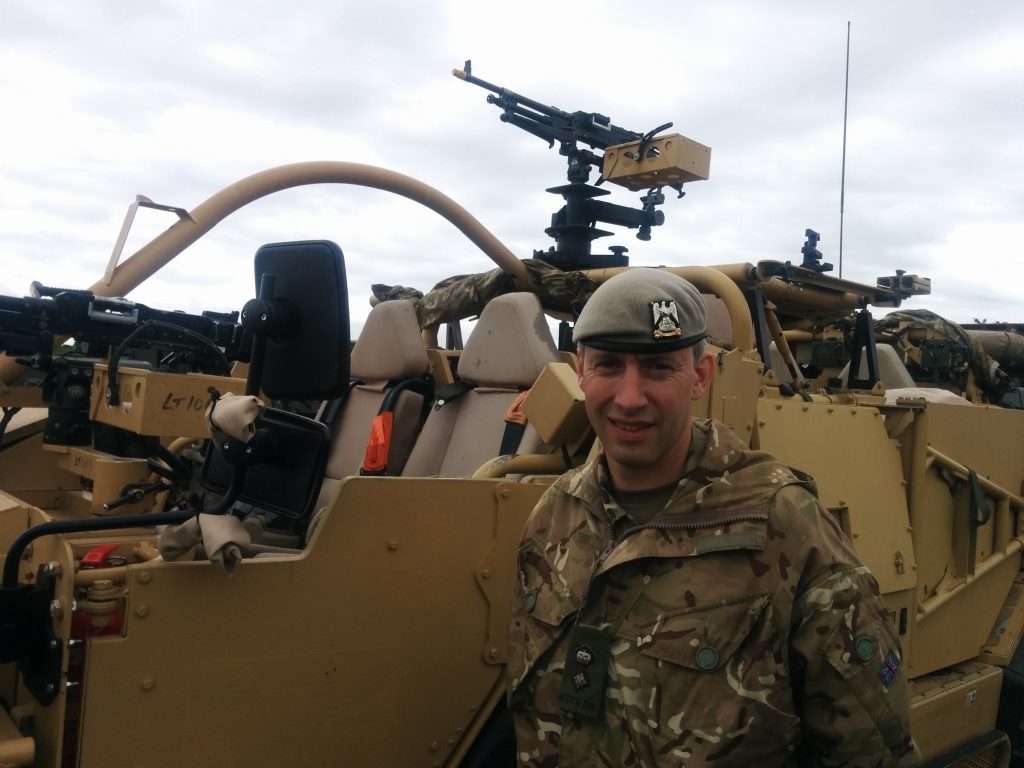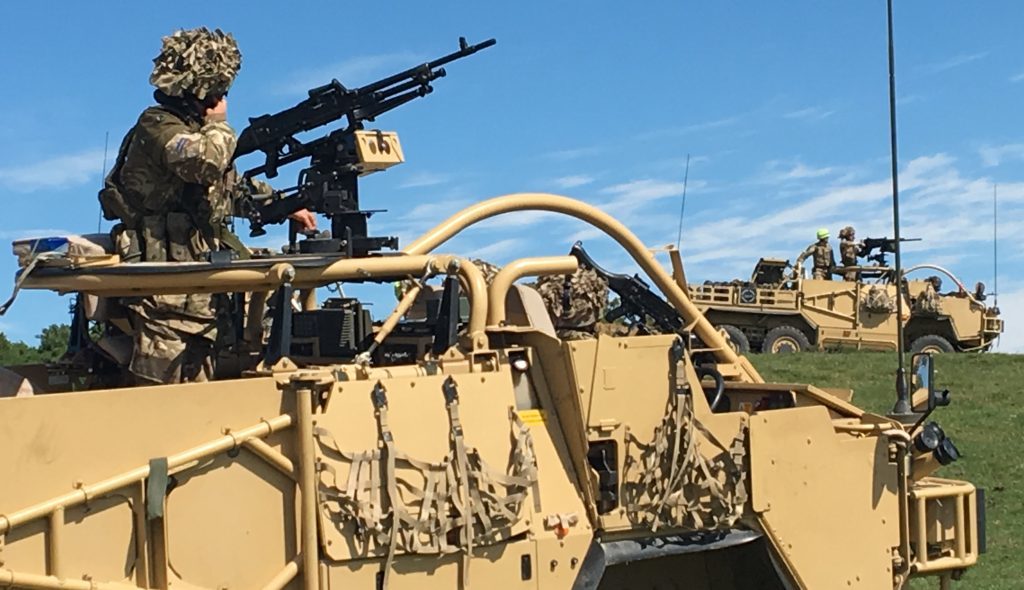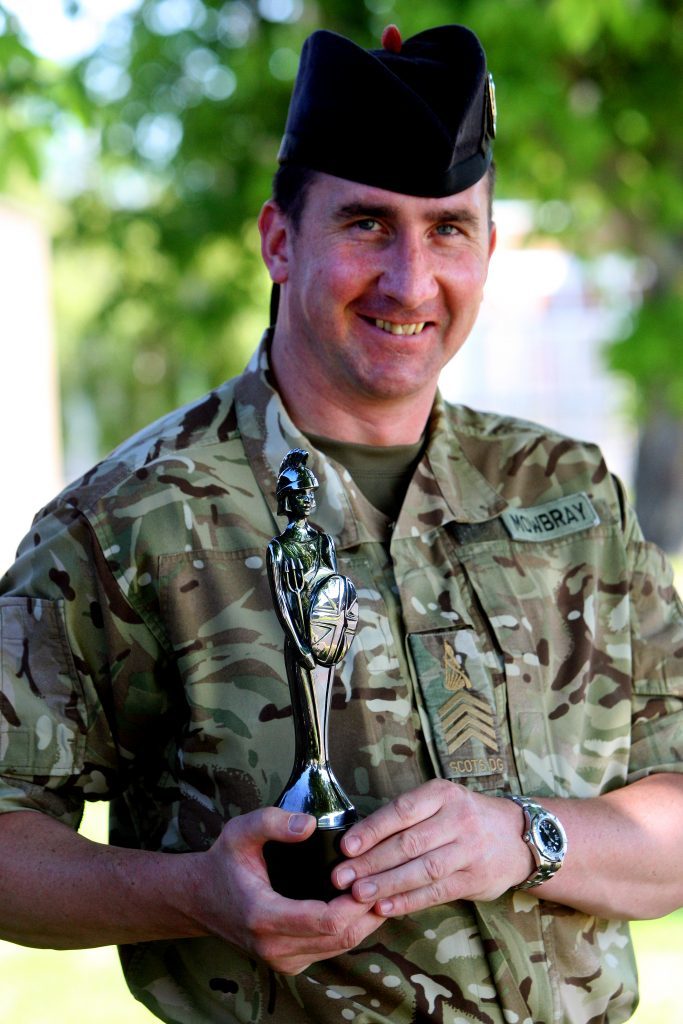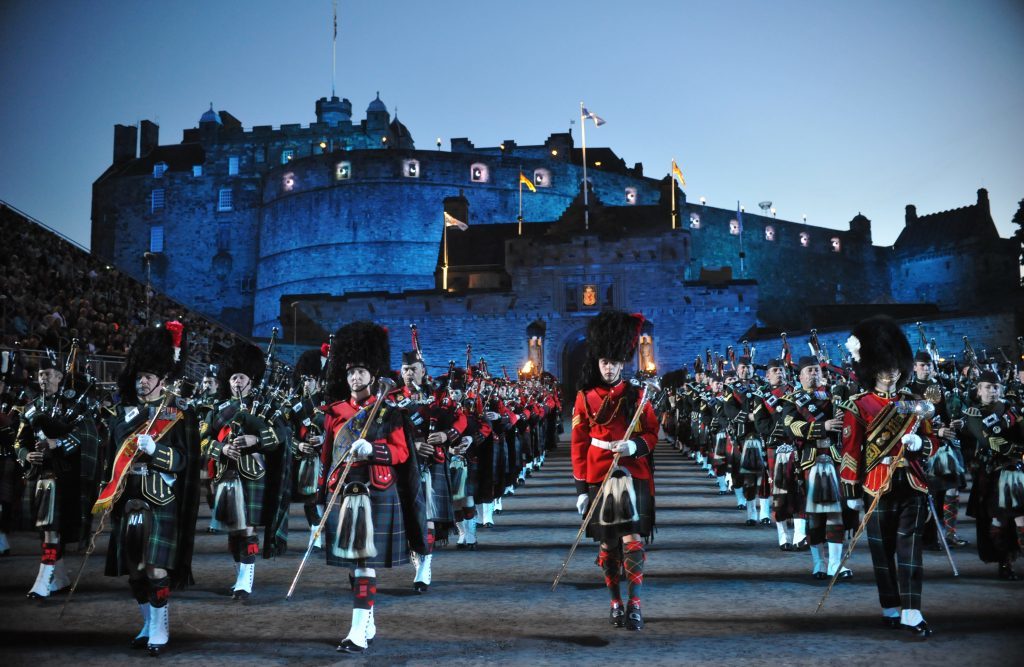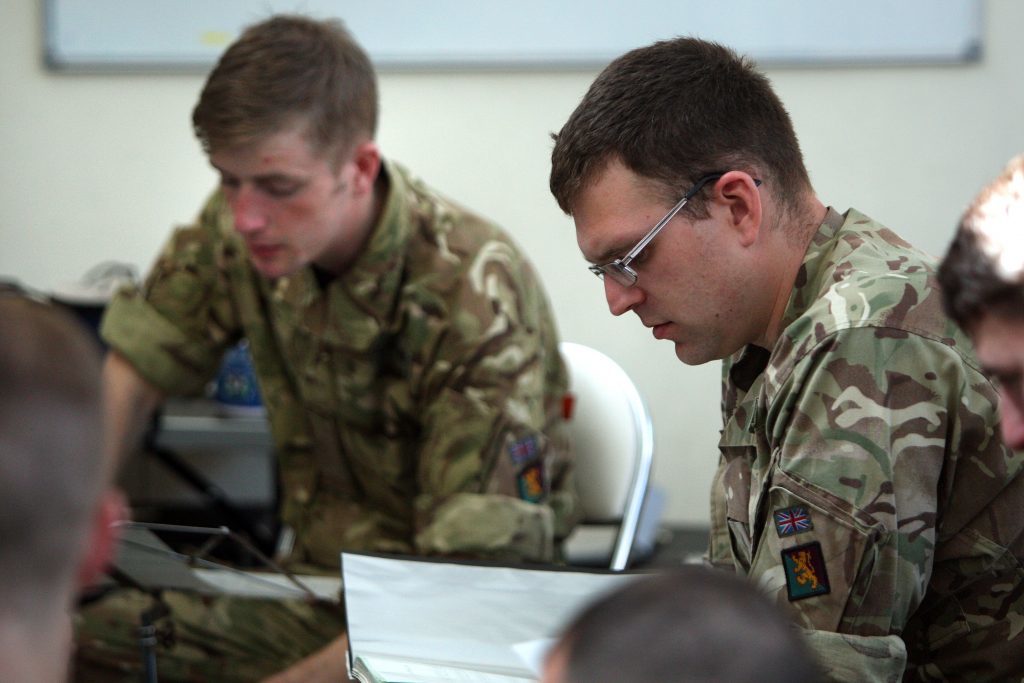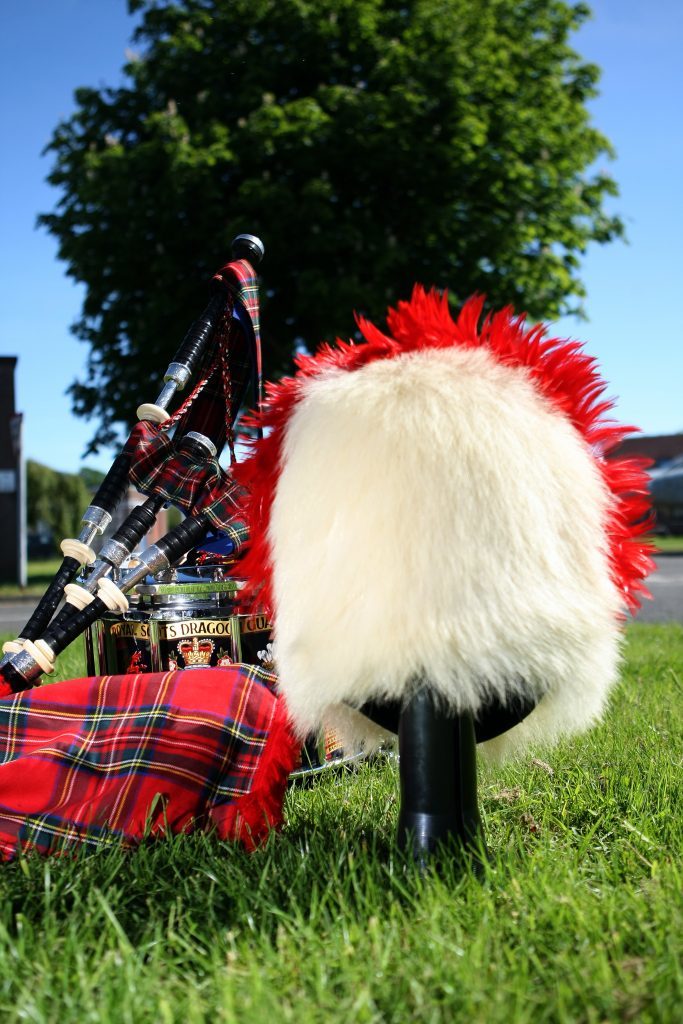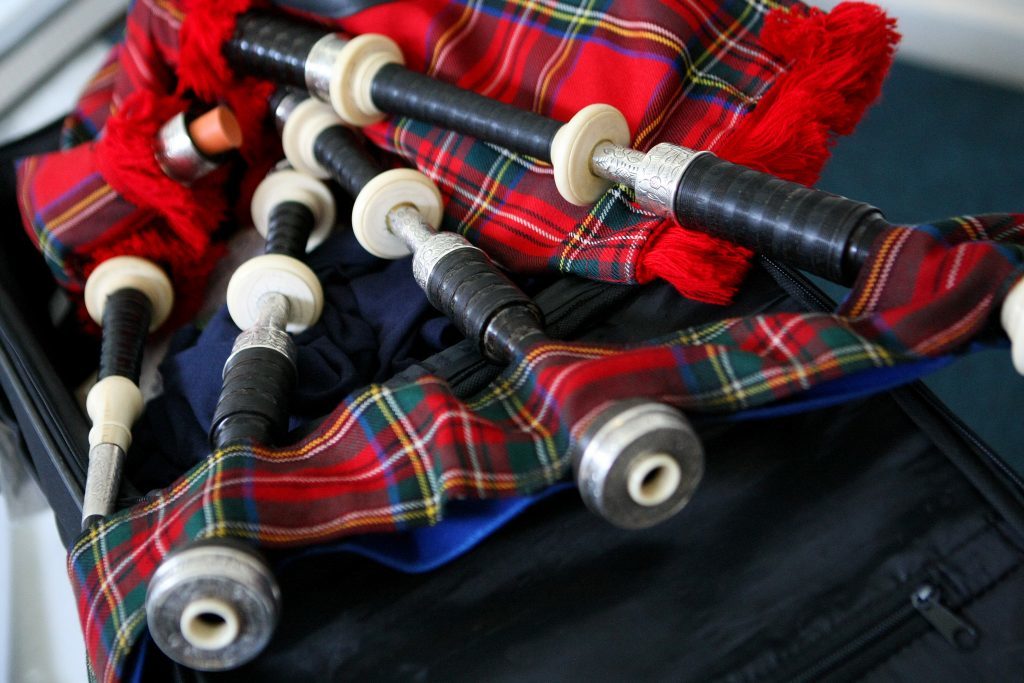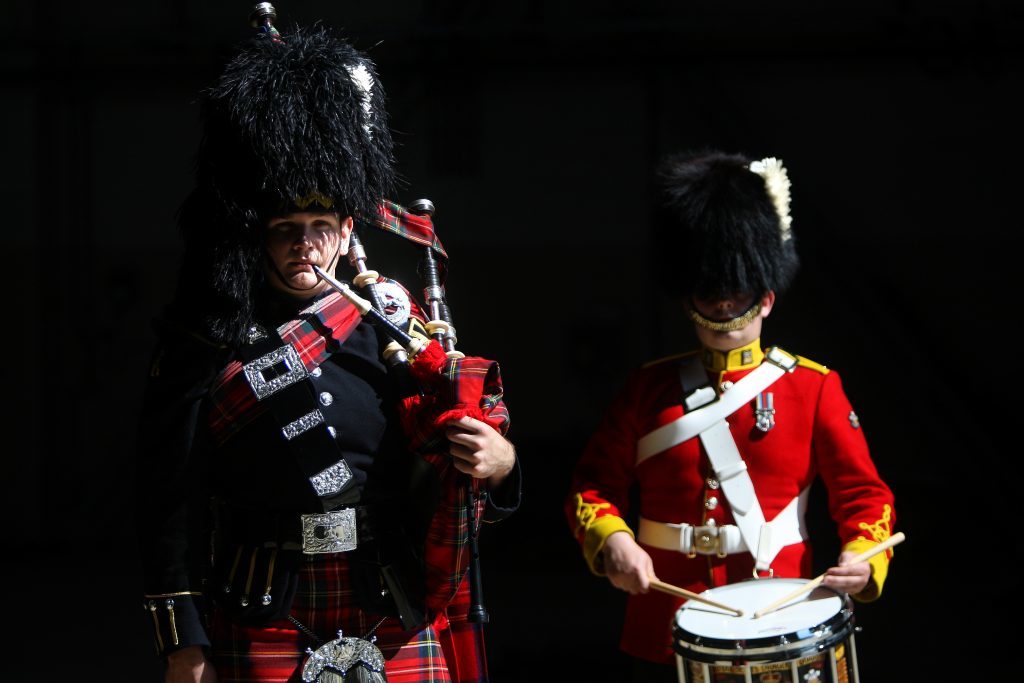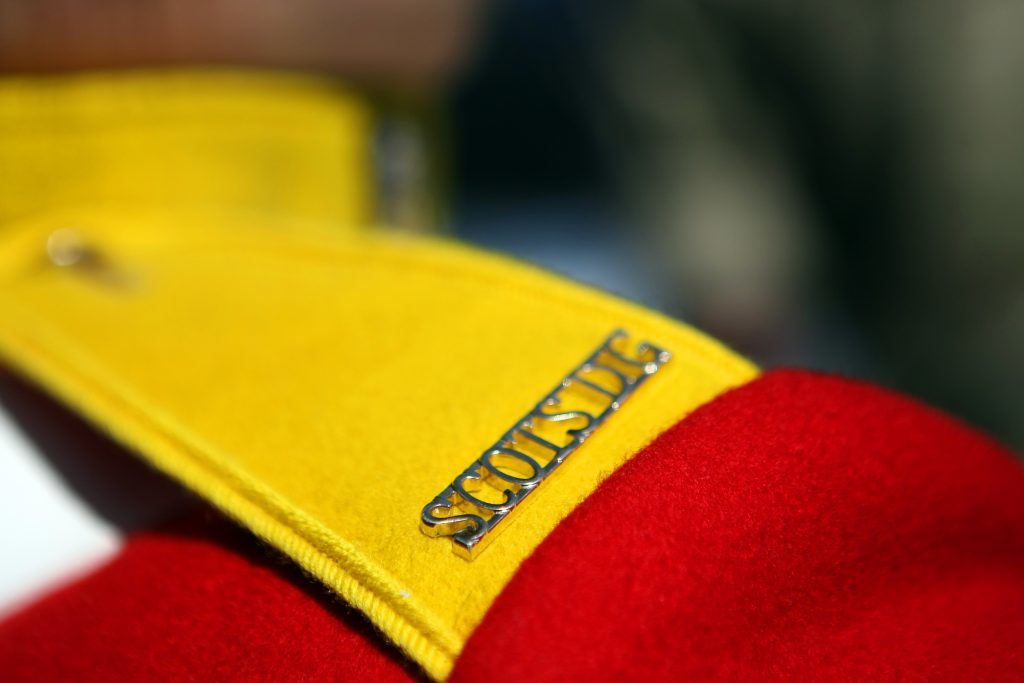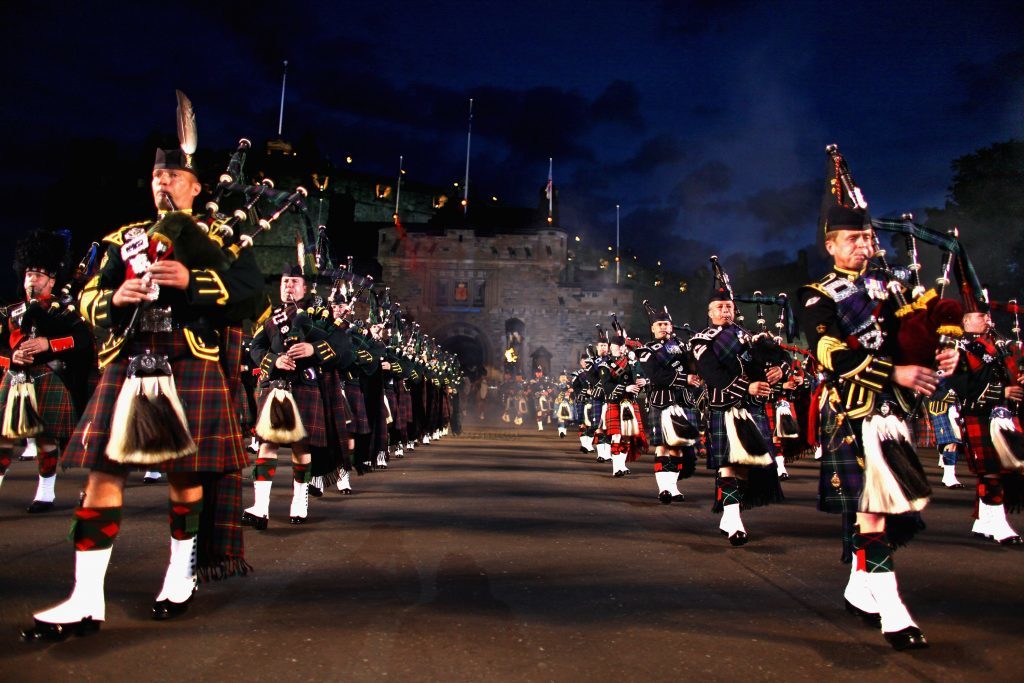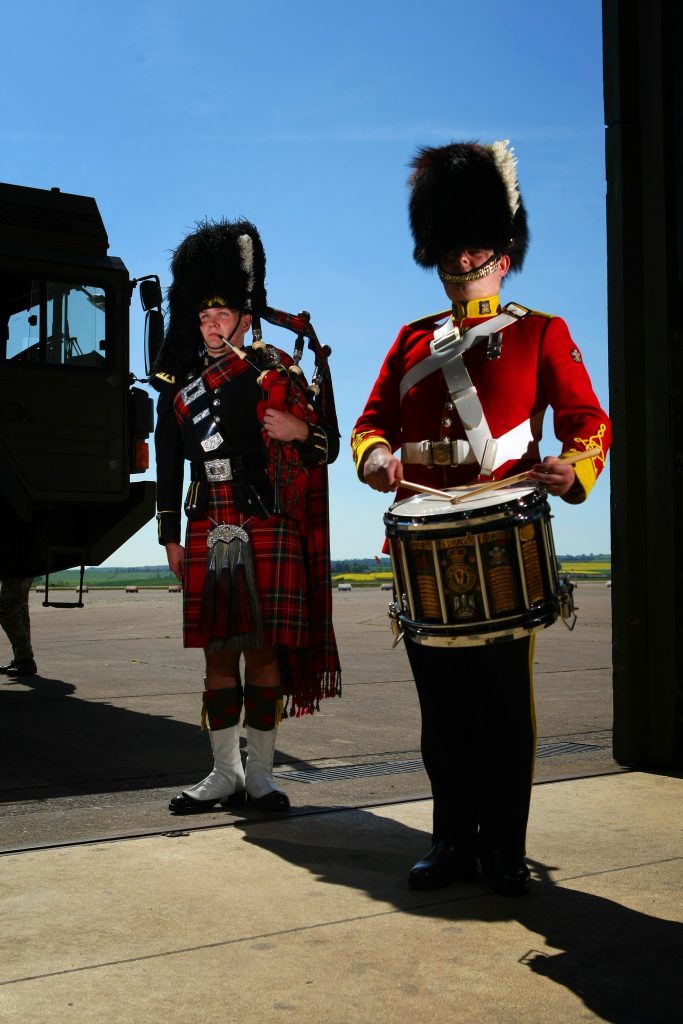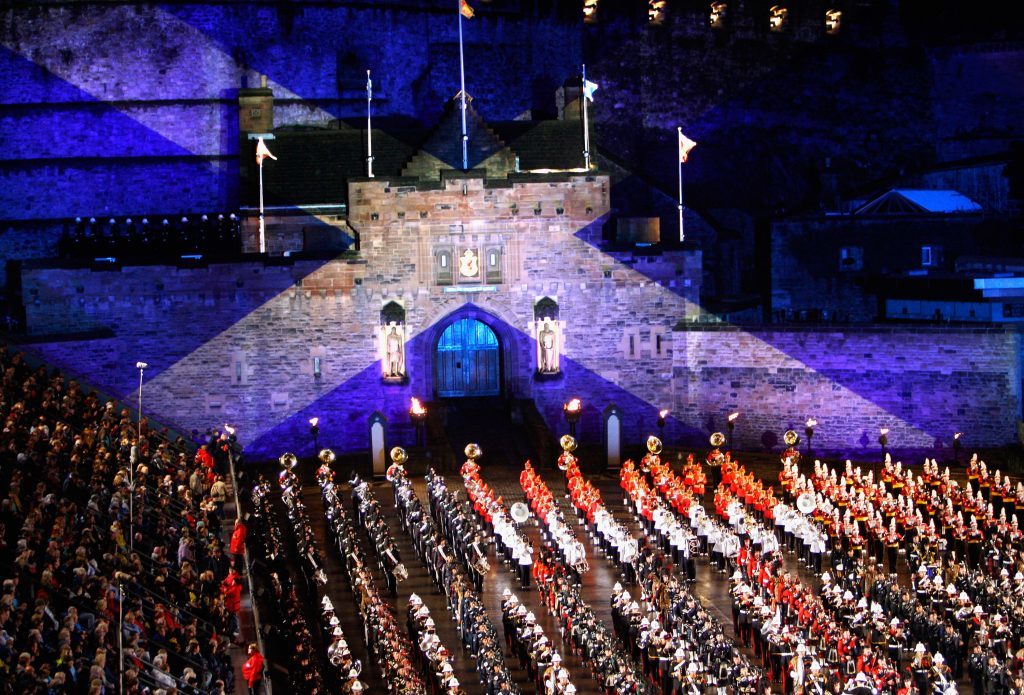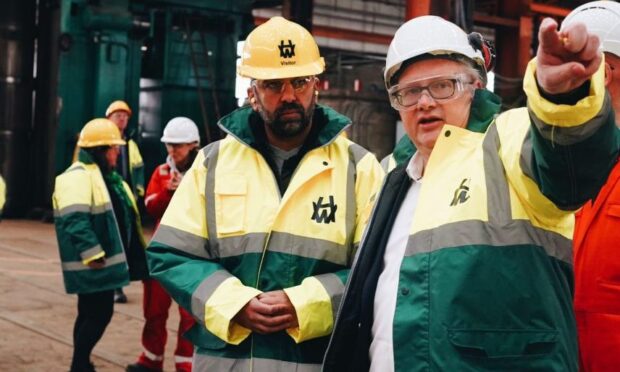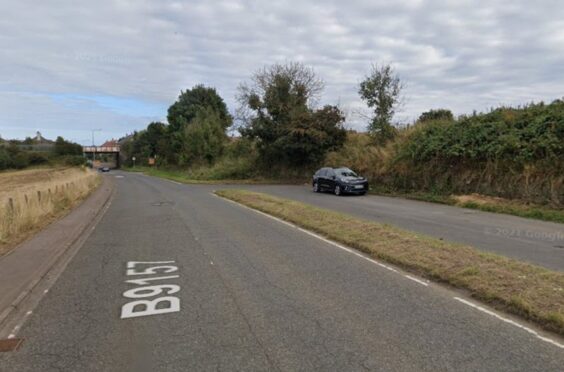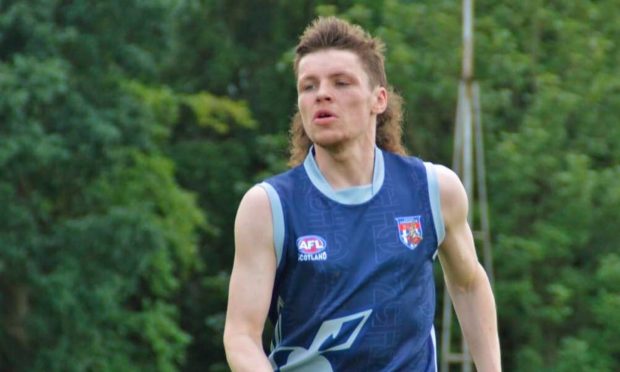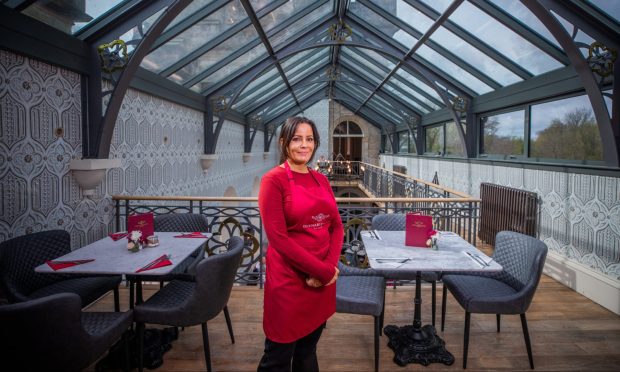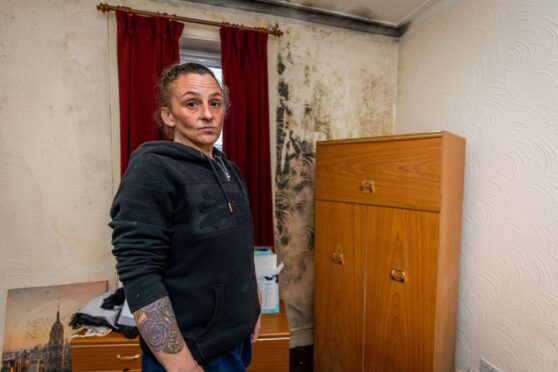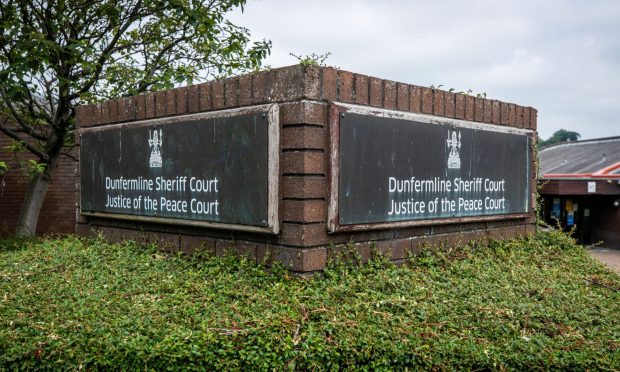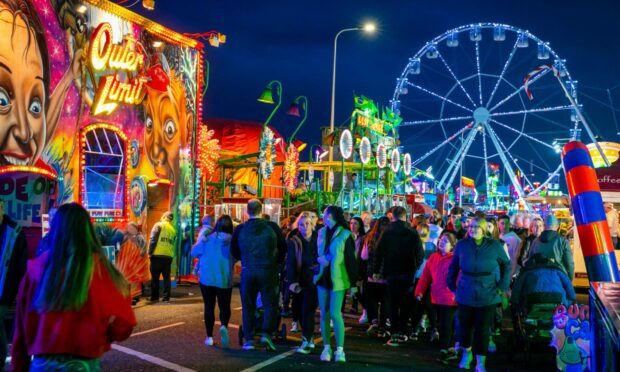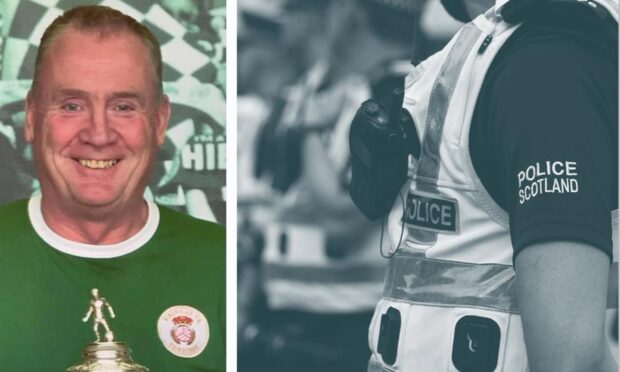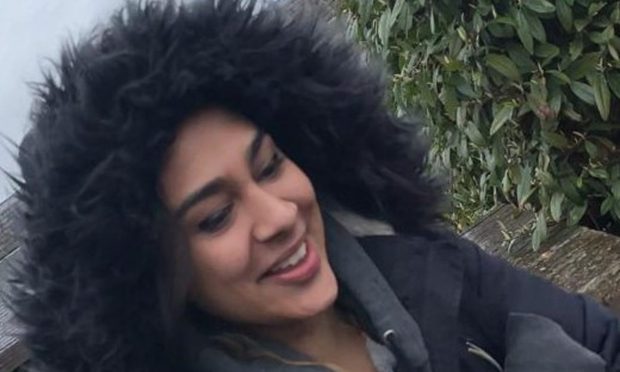Michael Alexander meets the world famous Brit Award winning Pipes and Drums of the Royal Scots Dragoon Guards, based at Leuchars, ahead of their three-week stint at the 2016 Royal Edinburgh Military Tattoo.
Not many army regiments can say they’ve been on Top of the Pops, performed at the Sydney Opera House and won a Classical Brit Award.
But the Pipes and Drums of the Leuchars-based Royal Scots Dragoon Guards can.
And now the world famous band, who’ve already toured Australia and New Zealand this year, are performing in front of thousands at the 2016 Royal Edinburgh Military Tattoo.
When The Courier arrives at the Leuchars Station army base to meet some of the 18-strong band who are all “soldiers first, musicians second”, the usual assortment of military battle honours from SCOTS DG’s illustrious history is on display.
But the walls of the small indoor training area are also festooned with musical awards including dozens of military tattoo medallions and gold discs.
They include the 1972 accolade when a previous incarnation of the band was number one in the charts for five weeks with Amazing Grace, ousting Nilsson’s Without You from the top spot, before being replaced by T-Rex’s Metal Guru.
There’s the trophy for winning the World Championships in Grade 2 in 1982, going on to gain 5th at the British Championships, 4th at the European Championships and 10th place at the World Championships in 1987.
And let’s not forget the Classical Brit Award, presented at a star-studded ceremony in the Royal Albert Hall in 2009 for the album Spirit of the Glen: Journey.
Remarkably, part of the album was recorded in an air conditioned tent in sweltering heat whilst the men were deployed in Basra, Iraq, in 2008.
It beat albums by Katherine Jenkins and Andrea Bocelli among others to the gong – all the more significant given it was the first time non-professional musicians had won a Classical Brit.
The Brit Award winning album was the follow up to Spirit of the Glen which stayed at number one in the classical charts and held that position for eight weeks over Christmas and New Year 2007.
Leuchars Station Commander and SCOTS DG commanding officer, Lieutenant Colonel Dom Coombes, said the Brit Award in particular was “pretty cool”.
“There’s not many army people rocking one of them!” he laughs.
Standards
But whilst upholding the rich legacy of the SCOTS DG Pipes and Drums is important to the regiment, the real achievement, he says, is maintaining high standards in music whilst adhering to their primary role as highly trained soldiers.
Lt Col Coombes says: “SCOTS DG are extremely proud of the Pipes and Drums. They are a small band of very talented men who literally have global appeal. They are undoubtedly the most successful military pipe band in the world.
“In the recent past they have gained a Brit Award in 2009, played at the centenary celebrations of the US Marine Corps at Camp Bastion, toured Australia and New Zealand with the Royal Edinburgh Military Tattoo, and played for Her Majesty’s 90th birthday. What a list! The most impressive part is that they are all primarily accomplished and skilled soldiers the same as the rest of us. Their band commitments are just an aside albeit a very important and impressive aside.”
Soldiering
The emphasis on soldiering first was evident in June/July when SCOTS DG advanced to Exercise Wessex Storm – the biggest exercise they have carried out since moving back to Scotland from Germany last summer.
Exercise Wessex Storm took place in Kirkcudbright in Dumfries and Galloway, and Salisbury Plain in Wiltshire, to validate more than a year’s worth of training.
The regiment, Scotland’s only regular cavalry unit, have changed their role from armoured (equipped with Challenger 2 Main Battle Tanks), to take on the army’s light cavalry role, equipped with the state of the art Jackal reconnaissance vehicle.
Pipe Sergeant Major Alan ‘Pipey’ Mowbray, 38, from Dunfermline, said the pipes and drums were “put back in the box” for the duration of the exercise, only coming back out for final tattoo practice at the end of July.
Now the ex-Black Watch soldier who transferred to SCOTS DG in 2004 said he and his colleagues were excited about turning attention to the Royal Edinburgh Military Tattoo.
A veteran of 16 Edinburgh tattoos and four overseas tattoos, he enjoyed watching on TV as a youngster and couldn’t play the pipes before joining the army.
But after a piping presentation at Catterick training barracks, he became “hooked” and gave up the chance to attend the Hong Kong handover parade with the Black Watch in 1997 in favour of going to the Army School of Bagpipe Music and Highland Drumming at Redford Barracks in Edinburgh.
There he learned how to read music, play the pipes and worked his way up to become a pipe major.
Pipey , who has completed several operational tours, was involved in the recording of the Brit Award-winning album in 2008. And he described the whole recording experience in the desert, and the subsequent awards ceremony in London as “surreal”.
“We did an album just before we went to Iraq, and then recorded the second album when we were in Iraq,” he recalls.
“We are soldiers first. So it was a case of coming in off patrol. We had an hour to get ourselves showered and then we did a recording. The recording studio was set up in a normal tent. We had a sign on the front that said ‘recording in progress’ and that was it. The guy from Universal Music came across. The way it works is you need three or four pipers then layer it up to make it sound like a full band.
“Then when we did the Brits it was surreal to be honest. It was a one off!
“We were treated like proper rock stars. When we performed at the opening, Myleen Klass and Katherine Jenkins were there. Then we came on and rocked the place!”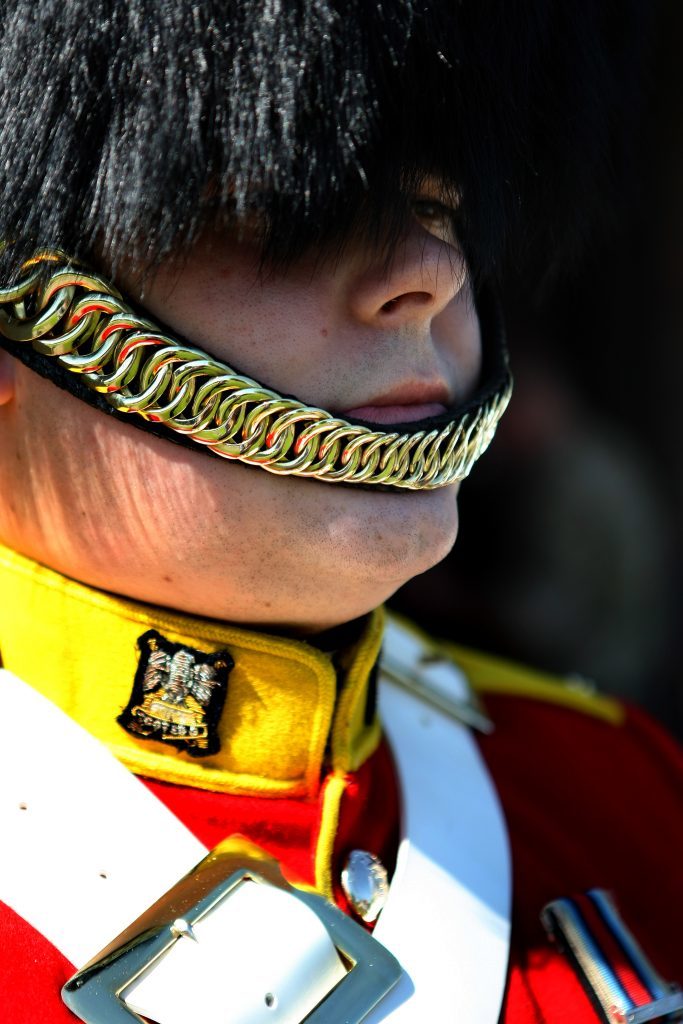
Drum Major Gordon Prescott, 27, from Stirling, also had limited musical experience outside of the army. The drummer said it could be “hard” to strike a balance between operational deployment training and music.
“You are away a lot more than the average soldier. But on the plus side, you get to visit countries you wouldn’t otherwise visit doing a job you love,” he says, adding that drum majors require patience, a thorough understanding of music and attention to detail to succeed.
Continuing the tour of the Pipes and Drums training building, Pipey shows off the “wall of fame” which includes photographs of all the pipe majors and drum majors over the years.
Meanwhile the bar area is filled with random artefacts where “all the magic happens”.
“This is where we come up with our crazy ideas,” he says. “All the stuff we’ve got on the walls is stuff we’ve acquired from around the world. Bits and bobs we’ve got over the years – knick-knacks from bands, from socialising at nights.”
Weddings
He reveals band members often get invited to play at weddings and funerals and often incorporate keyboards and guitars into piping with a rock vibe beat.
“We started before the Red Hot Chilli Pipers! They just got all the fame to it!” he laughs, adding that everyone from the German Bundesliga to the Military Wives Choir have been in touch seeking permission to reproduce their music.
There’s serious practice to be done, however, and during my visit, a group of soldiers are seated in a neighbouring room reading music and chanting in the Gaelic style of Canntaireachd – the ancient Scottish Highland method of notating. The session is being led on keyboard by Corporal Ben Duncan, a naturally talented musician and piper.
Pipey explains: “Canntaireachd is an old way of learning the bagpipes. They are practicing for a two month concert tour we are doing in Australia from October 3. We are doing 43 venues – but not the Sydney Opera House this time. We did that in 2004 and sold it out straight away – they had to put an extra night on for us. They love us and always give us a massive welcome overseas.”
Equipment and uniform is an essential part of the SCOTS DG Pipes and Drums identity.
Still in use are the silver and ivory pipes that were bought for Top of the Pops in 1972.
The drums, hand-painted with battle honours and colours, tend to wear our more often. Money from the sale of CDs is pumped back in to help cover replacement costs.
The uniforms, designed by King George VI, feature the Royal Stewart tartan whilst a ceremonial polar bear bearskin was presented by a former Colonel in Chief of the then Scots Greys, the Tsar of Russia.
Hackle
Pipers wear the grey hackle from the Scots Greys, the Van Dyke yellow zig-zag and the House of Hannover brooch. The uniform includes a now defunct sword belt, an eagle, a horse hair sporran, and tassles with red inside them acknowledging the battle honour of the Gordon Highlanders during the famous 1815 charge at Waterloo. The uniform is finished off with brogues and a traditional sgian-dubh in the pocket.
Drummers, meanwhile, wear the white hackle, a black bearskin, cross belt and a pouch in the back that was once to carry ammunition. The uniform is topped off with the famous red tunic and overalls which feature the two yellow stripes of the cavalry. The spurs at the back of George Boots are symbolic of the days when the cavalry were mounted on horses.
Trooper David Hall, 22, a drummer with the band for nearly three years, said the uniform was “alright” to wear – “just not when it’s hot!”. The Australian summer could be “interesting” he says.
Meanwhile, Kent-born Trooper Karl Lynch, 21, a piper since he was 12-years-old, said it was an “honour” to play the pipes – particularly when he had no previous Scottish connection. “Someone played down near me when I was a boy and I thought I’d give the pipes a go. I’ve been playing since.”
Other non-Scots preparing for the tattoo include a drummer from Cornwall, a piper from Manchester and a piper from Australia.
Rugby
“We had a Fijian drummer at one point but he left. Rugby is more their thing! They are scared they might get pulled away from rugby to do a pipe job!” laughs Pipey.
Come the tattoo, however, birthplaces won’t be relevant when the band proudly march down the brooding Edinburgh Castle Esplanade as part of the Massed Pipes and Drums alongside others including the Scots Guards, Royal Dragoon Guards, Royal Tank Regiment, Artillery, and a couple of civilian bands from Australia and South Africa.
“The first time you come out and you see the lights, camera flashes, smoke and stands, it’s awesome,” says Drum Major Gordon Prescott. “Once you’ve done it three or four times, you still enjoy it. You don’t get the same buzz you get that very first time. But it is an experience and we are all looking forward to it.”
Another man with experience of stardom is retired Brigadier Melville Jameson, 71, of Perthshire.
Amazing
The former producer and chief executive of the Royal Edinburgh Military Tattoo was pipes and drums president by the time the Royal Scots Greys merged with the 3rd Carabiniers to form SCOTS DG in 1971. Amazing Grace was part of an LP recorded by RCA Records in a room at Redford Barracks in 1970.
But with expectations that the LP would “only sell 1000 copies”, it was only later when Amazing Grace was given an airing on TV in early 1972 that the hit record followed, selling seven million copies worldwide and earning eight gold discs.
Reflecting on the live appearance on Top of the Pops, Brigadier Jameson, who is now the Lord Lieutenant in Perth and Kinross, says: “We met Jimmy Saville. I thought he was weird. But we didn’t appreciate he was that weird!”
SCOTS DG went on to perform with the big names of the day at the Royal Variety Performance in front of the Queen.
And looking back, Brigadier Jameson regards Amazing Grace as a “watershed moment in making military music digestible to the public.”
Downsized
In recent decades, defence cuts have resulted in military bands being downsized.
Yet the brigadier says the Pipes and Drums, which he describes as the “heart beat of the regiment”, continue doing a great job, and he is sure more success will follow – so long as the military hierarchy continues being supportive.
Former SCOTS DG commanding officer, now Colonel of the regiment, Brigadier David Allfrey MBE, has been chief executive and producer of the Royal Edinburgh Military Tattoo since 2011.
The retired commander of 51 Scottish Brigade in Stirling, who was “hugely privileged” to command SCOTS DG from 2000 until 2002, including two tours of Kosovo, is professionally impartial – but admits it’s “particularly special” when his own regiment performs.
“My regiment is in my DNA,” he says. “We have a very special relationship.
“This year’s theme at the Royal Edinburgh Military Tattoo is Tunes of Glory, to reflect on the history of military music in this, Her Majesty the Queen’s 90th year.
“We have such a rich and varied programme. Every year we try and keep it traditional and authentic whilst making it new. I hope the audience will be thrilled.”
- The 2016 Royal Edinburgh Military Tattoo runs from August 5 to 27. For more information go to www.edintattoo.co.uk
malexander@thecourier.co.uk
